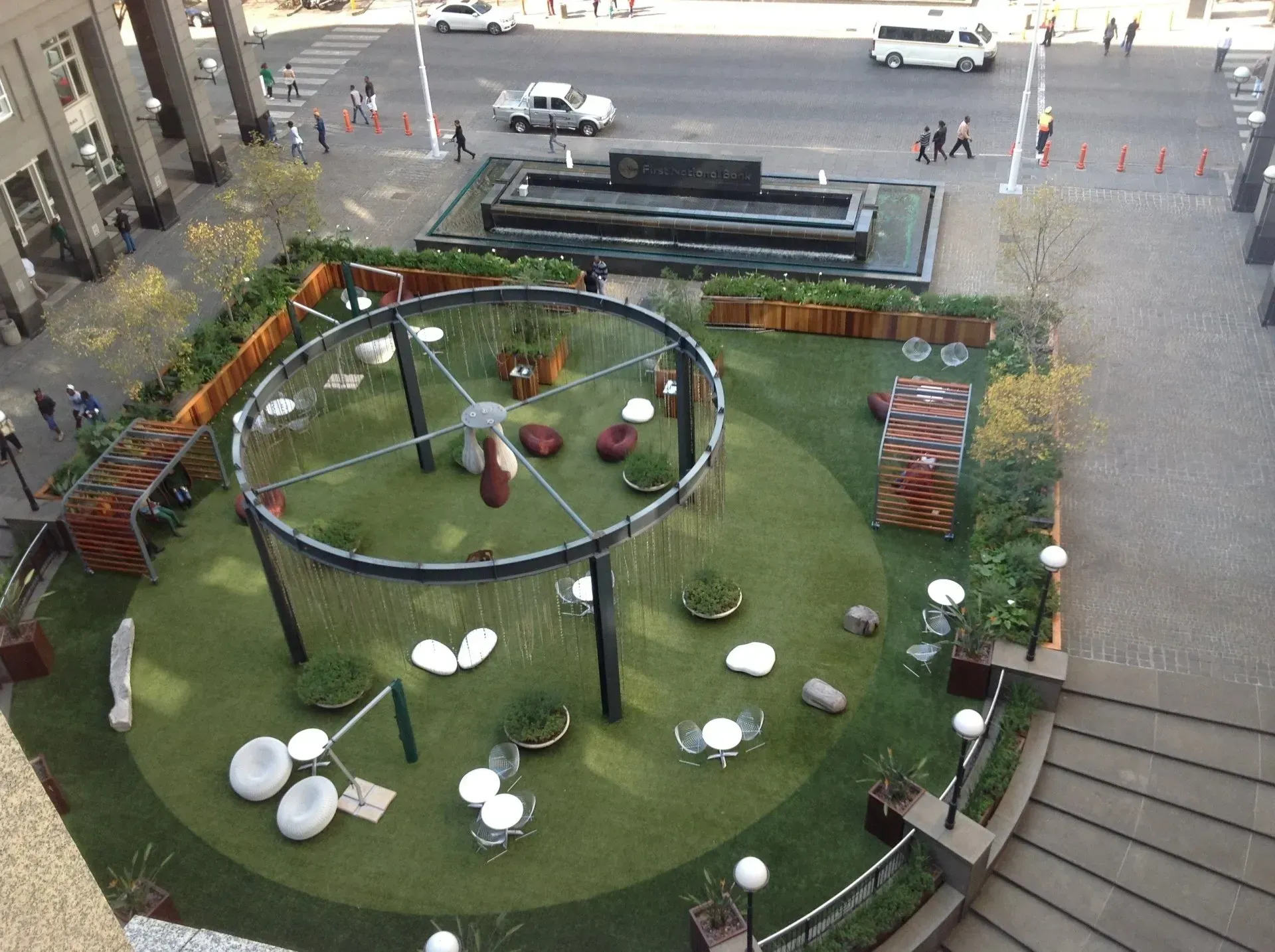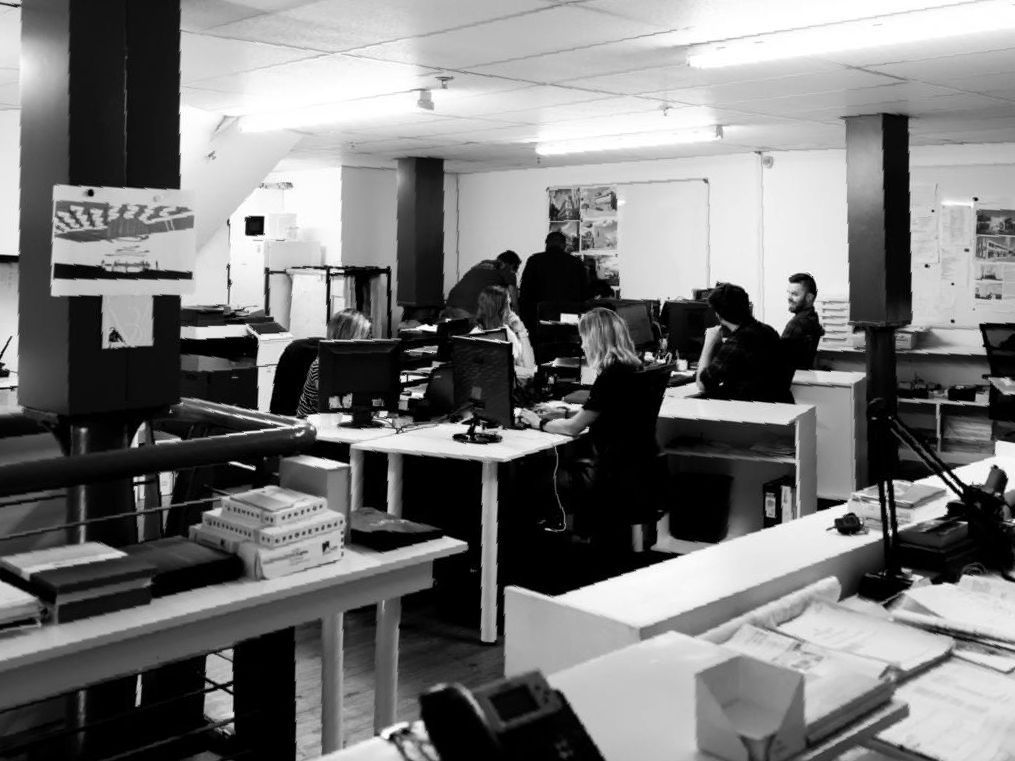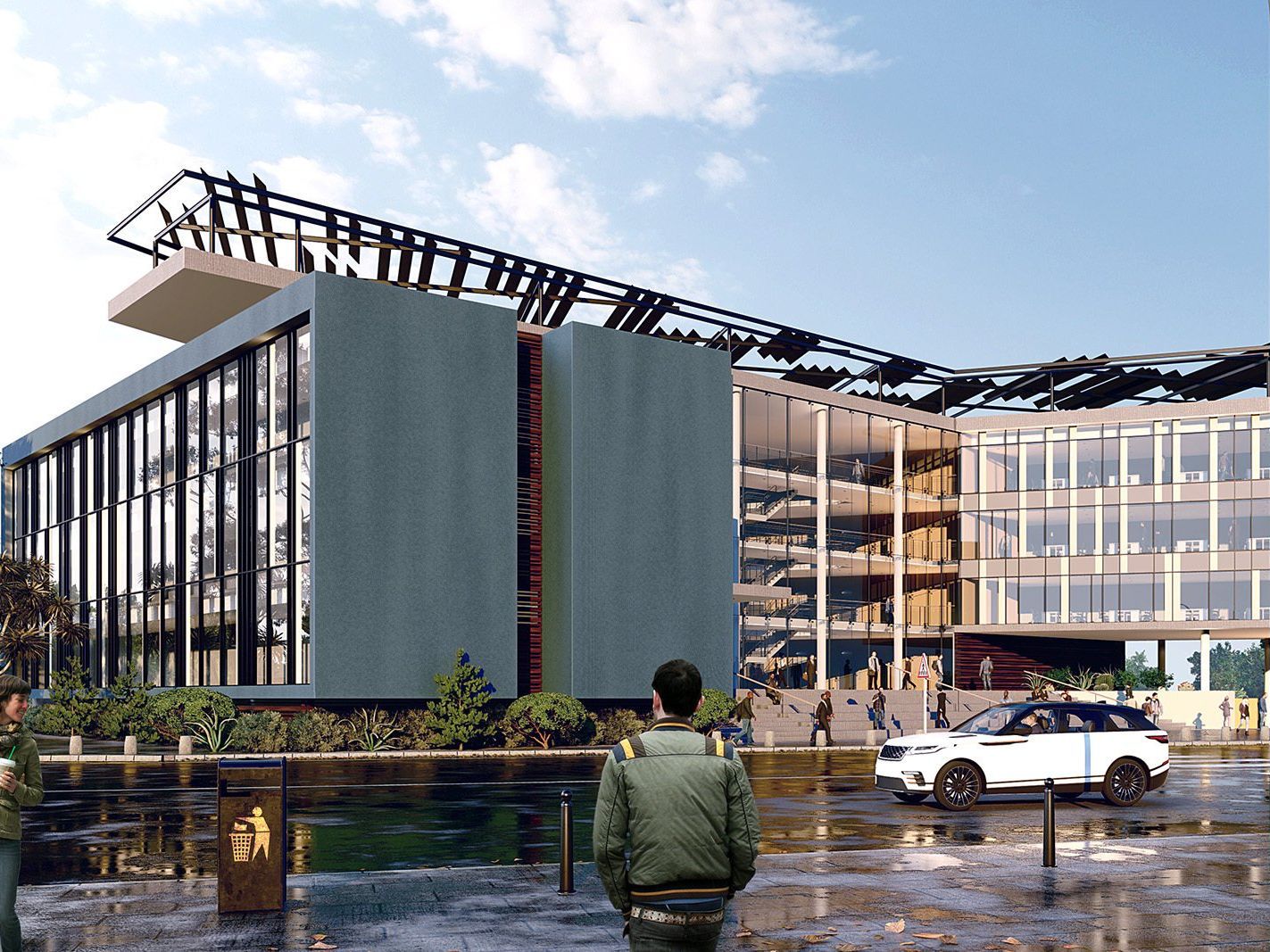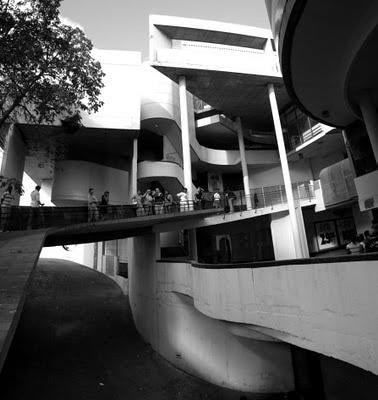Airports are bustling hubs of activity. From the safe and comfortable transfer through passenger terminals to providing a high-end shopping experience, airport terminals require careful design and detailed planning to function properly.
Operating a strict level of security, there is no margin for error when coordinating flow and functionality to optimise the safety and security of the many passengers and various staff that pass through the terminal complex daily.
And as the project owner or manager, you will be responsible for a lot more than you would on a small residential project.
In this blog post, we will be going through the 7 major steps we take when designing an airport terminal. We will be using one of our projects, the Cape Town International Airport (CTIA), as an example as we move through the process.
This is not intended to be a complete guide to airport design, but more of a “dip your toe in” taste of the process.
Step 1. Understand Who an Airport Terminal Needs to Serve
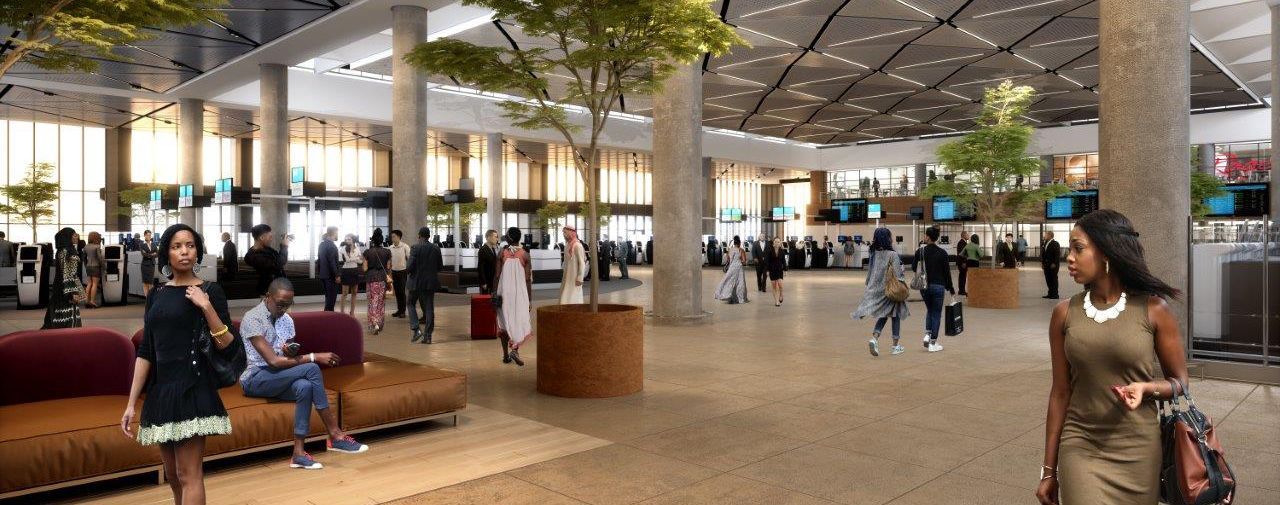
Airports will have people working, laying over for a connecting flight, and leaving or returning home with thousands of passengers and staff passing through airport terminals every day.
In 2022, over 8 million airport passengers were estimated to pass through Cape Town International Airport.
So, with the incredible number of people an airport needs to accommodate, it’s vital to first acknowledge the necessary public and internal requirements before designing an airport terminal.
Two of the most important considerations when understanding who an airport is designed to service are passenger experience and functionality.
What to Consider for Passenger Experience:
- Flow and movement through passenger terminal
- Direct routes to gates to avoid long walking distances
- Comfortable, open spaces
- Ample facilities such as bathrooms and drinking water
- Shopping, restaurants, and other unique amenities
- Adequate seating
- Members lounges
- Meeting areas
What to Consider for Passenger Functionality:
- Accessibility
- Parking
- Security access
- Weather protection and passenger tunnels
- Check-in counters
- Security checkpoints
- Baggage handling
- Indoor smoking areas
Step 2. Engage with Stakeholders
The designer or architect has creative ideas and innovative solutions for structures and how people interact with them.
However, airports are incredibly complex projects to design, and sometimes they can overlook certain specifics.
Engaging with stakeholders at all levels and ensuring the design meets their needs is essential.
The best airport terminals are the ones that offer something new and refreshing. The simplest way to do this is by speaking to the people with the most experience in airports and getting their perspective on enhancing the experience as a whole.
Get on the ground and assess how you can improve or enhance your design by speaking with passengers, airport staff, the local community, airline executives, airport authorities such as customs & immigration, and local tourist boards.
For CTIA, our design team liaised closely with many knowledgeable and experienced stakeholders from the beginning of the design concept and throughout the whole process.
Through these relationships, they gained invaluable insight and information, helping CTIA win the award for best airport in Africa!
Step 3. Know Your Constraints For Terminal Building
Designing an airport terminal is a very exciting prospect and challenge. However, adhering to industry standards and regulations is vital when planning your airport development designs.
Regulations and best practices will vary from country to country, so it’s important to do your research and understand your requirements regarding any limitations and expectations you have to meet for safety and security.
On the 2017 CTIA Terminal 2 design and construction project, our architects navigated many challenges and constraints involved in airport construction such as not managing the construction in phases and dealing with the logistics of rerouting passengers to allow the changes to go ahead safely.
In addition to building regulations and safety standards, public safety zones in airport terminals are often standard in many countries.
If the airport terminal doesn’t meet the criteria set out by relevant authorities, investment in the project is at risk, costing enormous amounts of time and money.
Step 4. Include Sustainability in Your Terminal Complex Design

Aviation amounts to 2.5% of global carbon emissions.
While this is not a large figure, when you consider the amount of C02 involved in transport to and from airports and waste produced, airports surely contribute to a higher percentage of emissions as a whole.
Thankfully, there has been a massive global shift in mindset towards sustainability and this is no exception to the aviation and construction industries.
When outlining your design plan, creating a sustainability strategy early in the process is crucial. This will help you achieve a greener design process, helping you make smart choices when sourcing materials, researching technologies, and improving your design overall.
Here are ways to bring to design your airport more sustainably:
- Consider the natural environment surrounding the terminal
- Use sustainable materials and technologies
- Optimise energy efficiency within the terminal
- Use sustainable light sources - e.g. use of LED lighting instead of incandescent bulbs
- Reduce water consumption with taps that turn themselves off
Step 5. Recognise the Importance of Aesthetics
Aesthetics are always a vital part of any design project. However, considering how much capital is at stake in designing an airport terminal, this puts even more pressure on the architect to deliver exceptional design.
Investors will demand that global standards for how a new and modern airport terminal should look and feel are upheld and taken further where possible. So your architect should focus on finding ways to make standard features more attractive and unique.
Airport terminal design should showcase the best of modern design, innovation, and technology, while also reflecting the identity and culture of its country.
Step 6. Establish a Plan of Action For Airport Development
Once you’ve completed your research and preparation, you and your architect can begin developing a plan of action to help you with the next steps.
A plan of action will need to be established as part of the enablement phase of your project. This stage of designing an airport terminal will help you determine any potential problems so you can create solutions and avoid them altogether.
In the development of Terminal 2 for CTIA, our architects overcame many logical and design hurdles, mostly related to relocating and rerouting during the construction, to create minimal disruption to regular operations.
Once you have established your plan of action, you’ll have a clearer path ahead of you and can focus on fine-tuning the details of your overall design.
Step 7. Finalise the Details of Your Design
To get to this crucial point, architects must have conducted a vast amount of research into the project, airport, and area in which they are designing. This step allows you to reap the rewards of your hard work by affording more creative freedom.
Some important elements your architect should consider in passenger terminal designs:
- Layout design should meet operational requirements
- Optimise passenger flow patterns for safety and efficiency
- Select sustainable materials and technologies
- Amenities for travellers (shops, eateries, lounges)
- Ensure your design reflects the future of air travel
Designing An Airport Terminal Is A Layered And Extensive Process
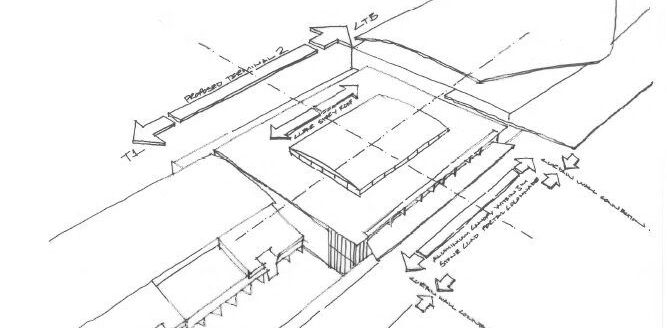
With so much at stake, from the safety of large groups of people to massive amounts of investor money, it’s absolutely essential that you’re meticulously detailed in your planning and execution.
If you take all the steps outlined above, you’ll be sure to reach the levels of success of our incredible architects in their impressive ventures.
At Designscape, our award-winning architects have extensive experience with Airport design, having worked on large airports such as King Shaka International, Kasane International in Botswana, a new airport in Central Africa, and, most recently, Cape Town International Airport.
If you'd like to speak to an experienced architect about your upcoming project, get in touch with our team of professional architects and designers in Durban and Cape Town.
For more information about our innovative architectural services and on how we can assist you, get in touch with our team of professional architects and designers in Durban and Cape Town.

Cape Town
109 Waterkant Street
De Waterkant Cape Town
South Africa, 8001
Durban
Rydall Vale Office Park
Rydall Vale Crescent
Block 3 Suite 3
Umhlanga, 4019
Website design by Archmark


